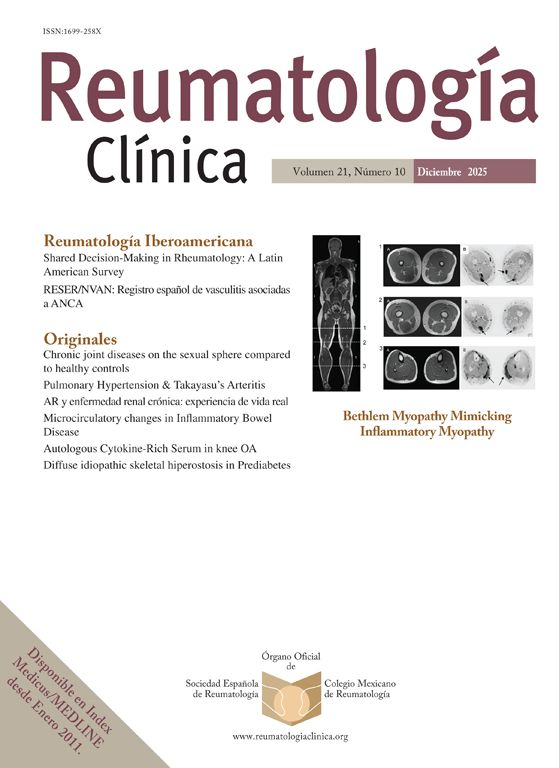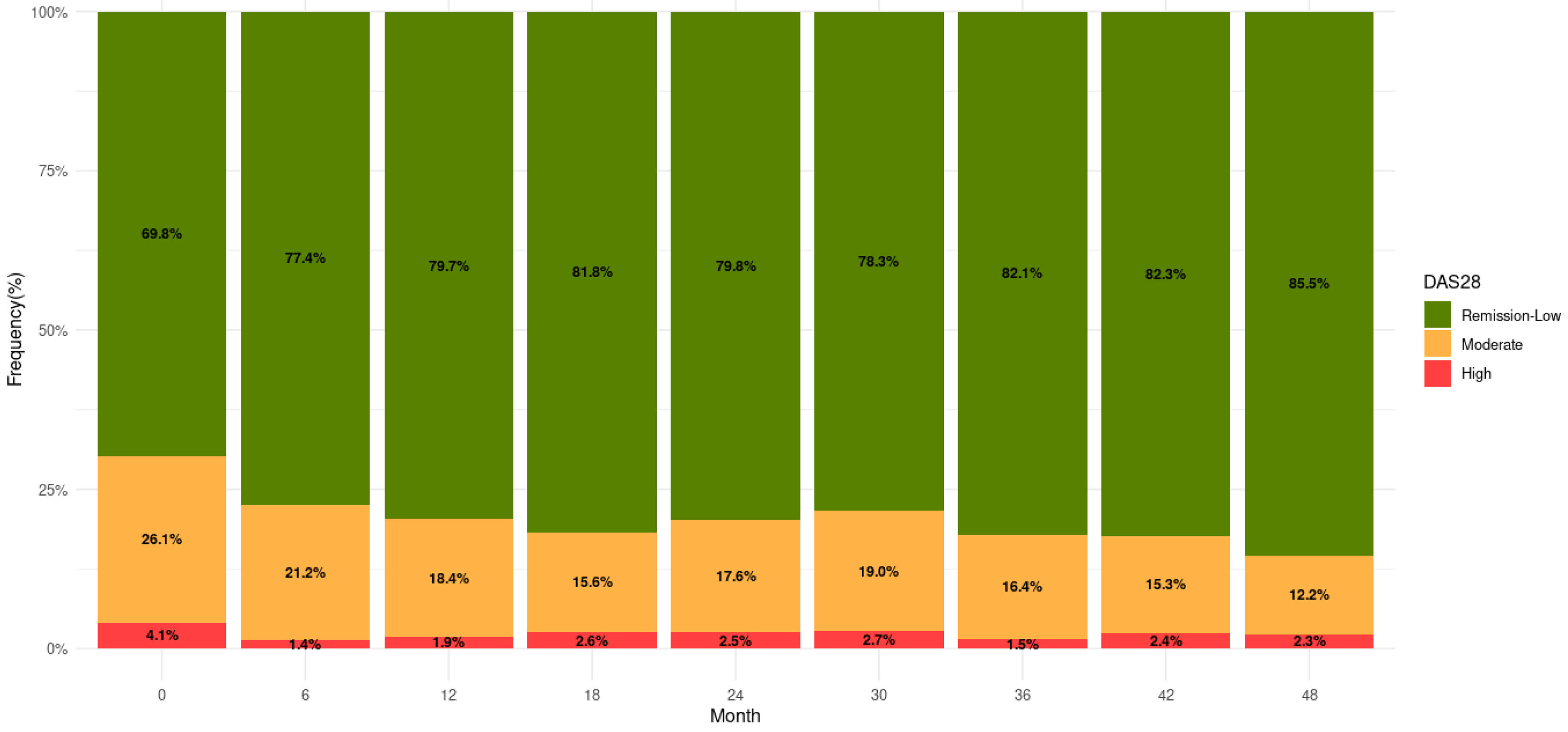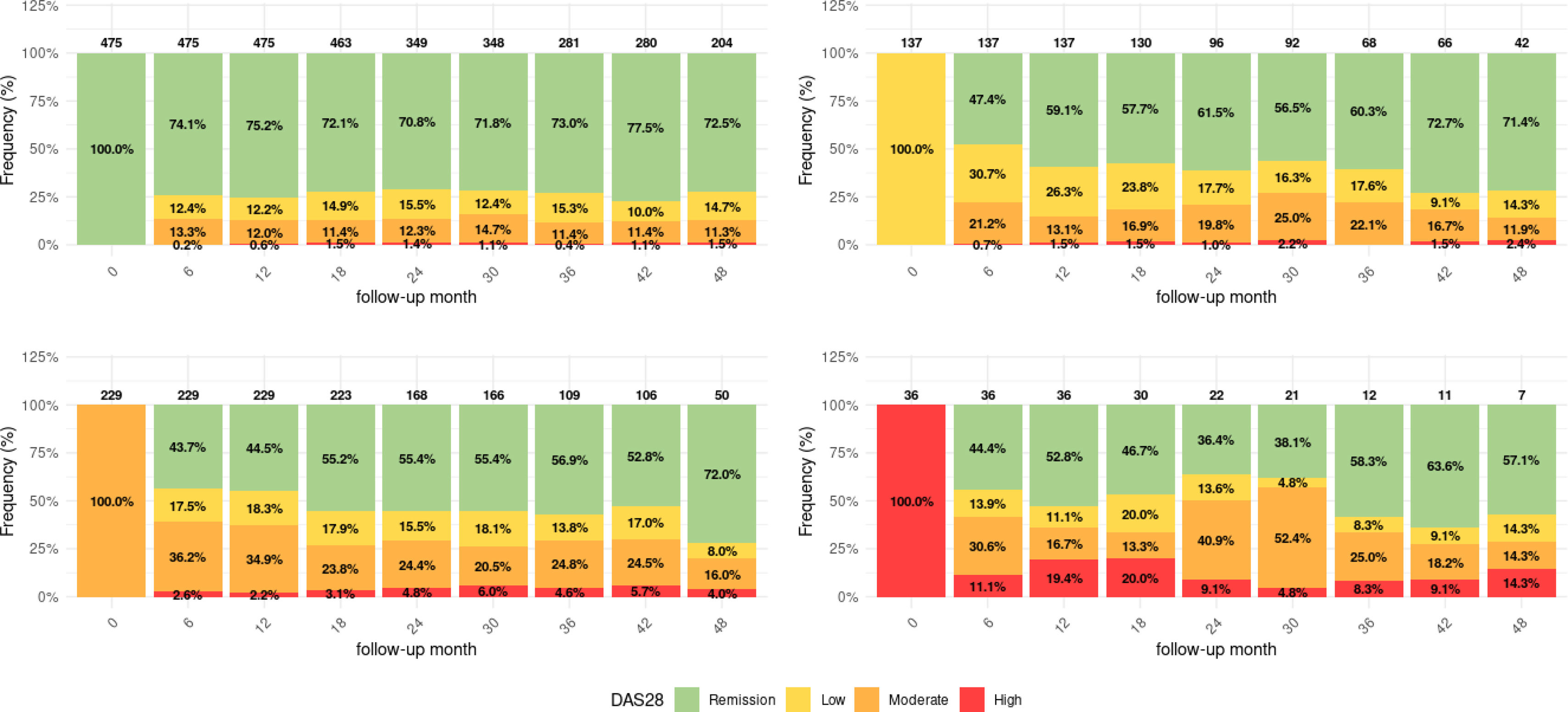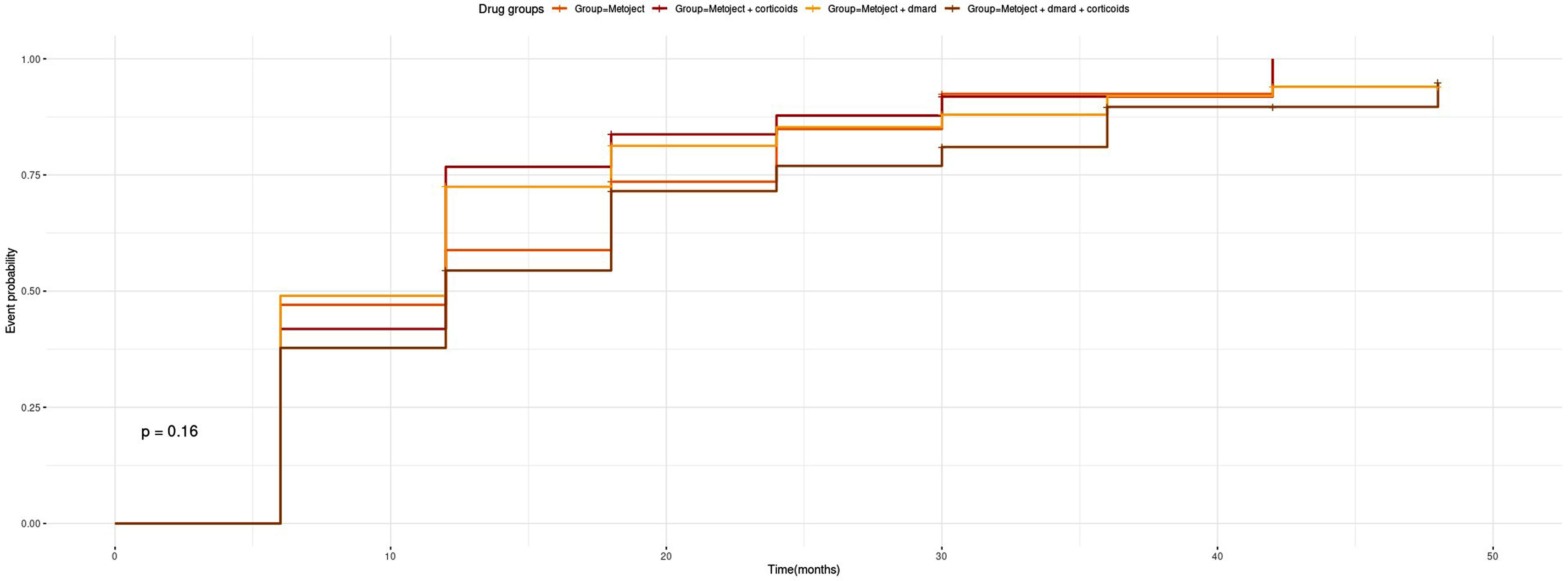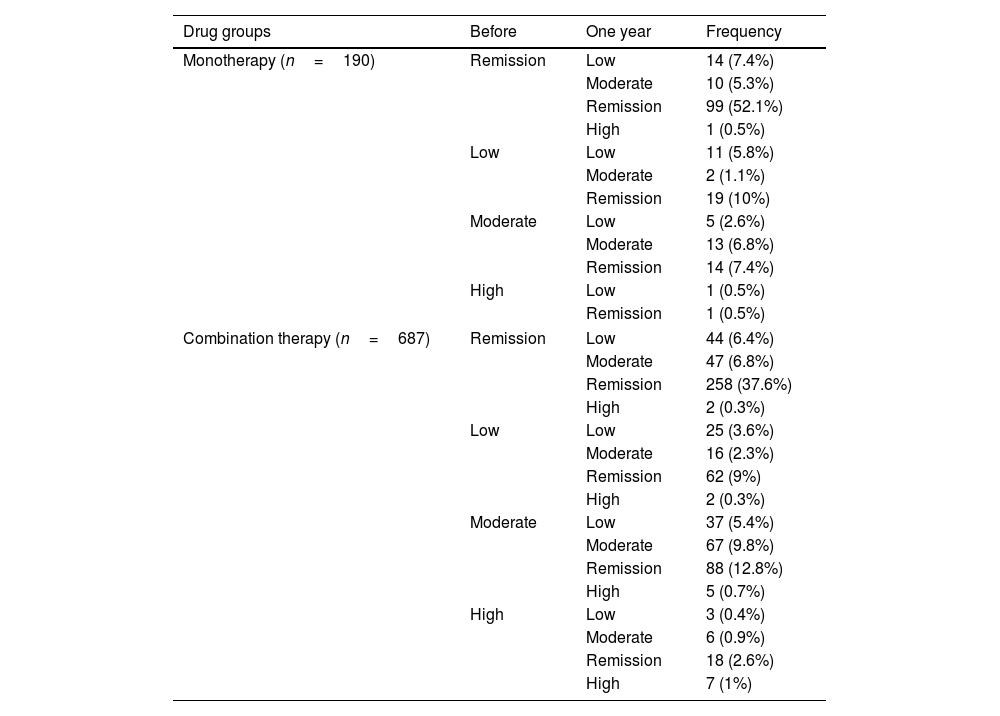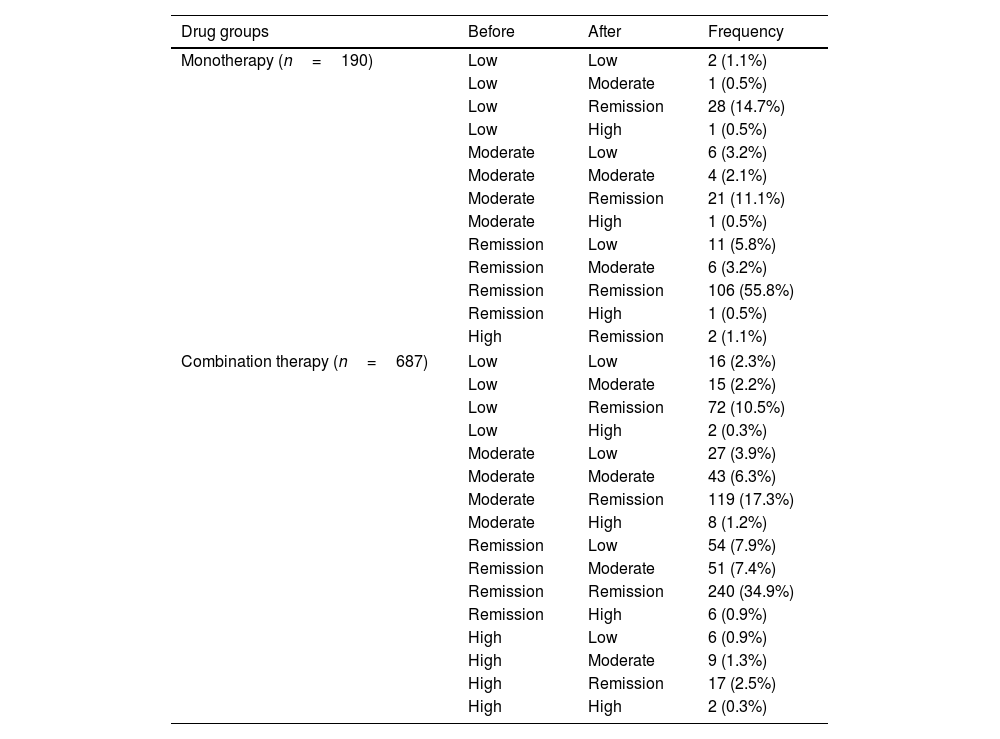Methotrexate has been used as the gold-standard therapy in patients with rheumatoid arthritis (RA) for more than 30 years. However, there is limited information on long-term effectiveness. The aim of this study was to describe the effectiveness of subcutaneous methotrexate (MTX SC) and its long-term persistence in real life in patients diagnosed with RA.
Patients and methodsWe conducted an analytical retrospective cohort study of patients with RA treated at a reference center in Colombia. We included participants older than 18 years-old with a minimum of one year of follow-up using MTX SC. The main endpoint was to evaluate the changes in the level of disease activity through the DAS28 index from 6 to 48 months of follow-up. Survival curves were estimated using the Kaplan–Meier method to compare different therapies with MTX SC. A p-value<0.05 was considered statistically significant.
Results877 patients with RA were included, with a median age of 65 [RIQ: 57–73] years, 84% of whom were women. Therapeutic success was achieved in 83% of the population considering those who were maintained in low activity or remission during the follow-up period.
Discussion and conclusionsThis study shows the proportion of those who started with active disease, meanwhile those in remission and low activity increased from 6 months to the end of follow-up when MTX SC is used appropriately. Effectiveness and persistence of MTX SC over time can be extended up to 48 months during follow-up.
El metotrexato ha sido utilizado como la terapia estándar de referencia en pacientes con artritis reumatoide (AR) durante más de 30 años. Sin embargo, existe información limitada sobre su efectividad a largo plazo. El objetivo de este estudio fue describir la efectividad del metotrexato subcutáneo (MTX SC) y su persistencia a largo plazo en la vida real en pacientes diagnosticados con AR.
Pacientes y métodosRealizamos un estudio analítico de cohorte retrospectivo en pacientes con AR atendidos en un centro de referencia en Colombia. Incluimos participantes mayores de 18 años con un mínimo de un año de seguimiento utilizando MTX SC. El desenlace principal fue evaluar los cambios en el nivel de actividad de la enfermedad mediante el índice DAS28 desde los 6 hasta los 48 meses de seguimiento. Las curvas de supervivencia se estimaron utilizando el método de Kaplan-Meier para comparar diferentes terapias con MTX SC. Se consideró estadísticamente significativo un valor de p<0.05.
ResultadosSe incluyeron 877 pacientes con AR, con una mediana de edad de 65 años [RIQ: 57-73], de los cuales el 84% eran mujeres. Se logró el éxito terapéutico en el 83% de la población, considerando a aquellos que se mantuvieron en baja actividad o remisión durante el período de seguimiento.
Discusión y conclusionesEste estudio muestra que la proporción de pacientes que iniciaron con enfermedad activa disminuyó, mientras que aquellos en remisión o con baja actividad aumentaron desde los 6 meses hasta el final del seguimiento al usar MTX SC de manera adecuada. La efectividad y la persistencia del MTX SC en el tiempo pueden extenderse hasta 4 años durante el seguimiento.

